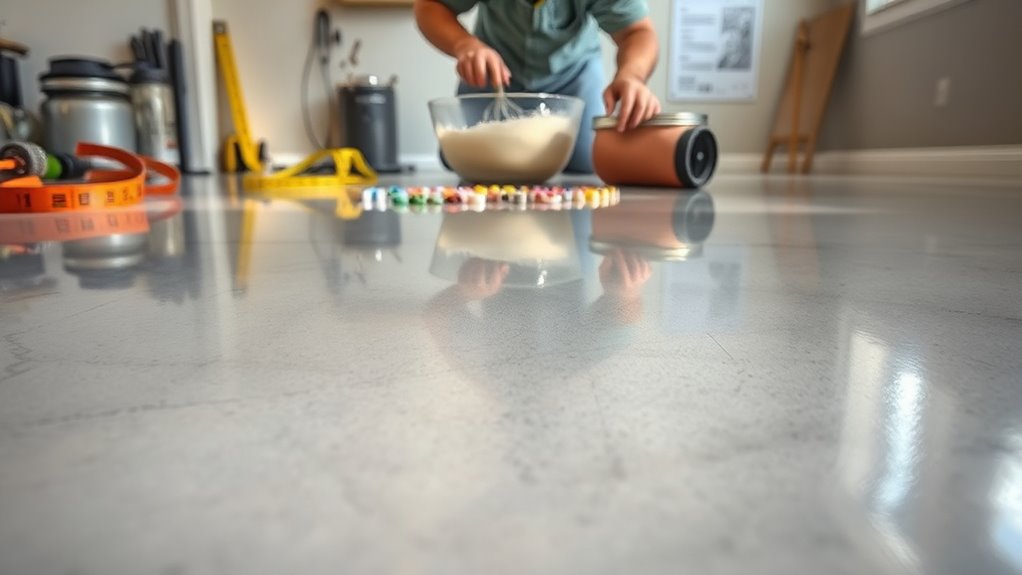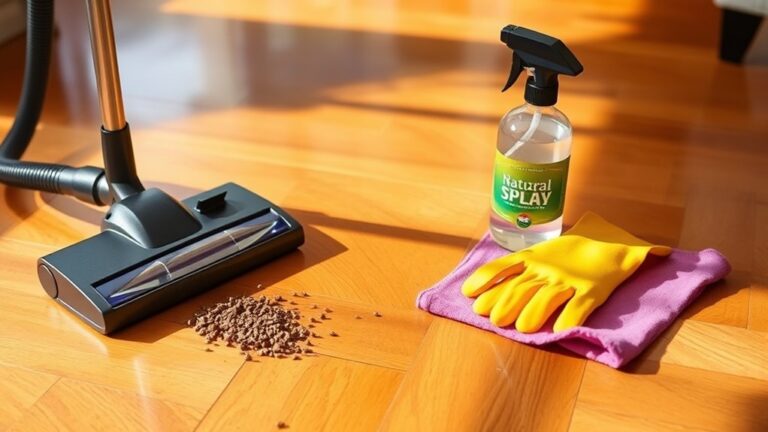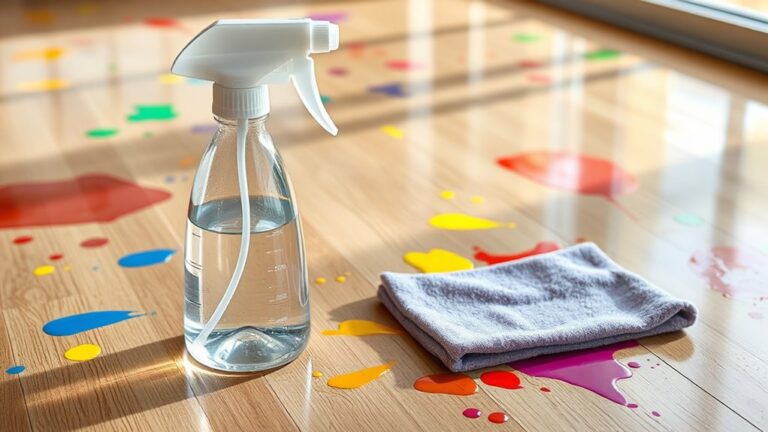When estimating epoxy resin flooring costs, you should first consider the resin type, as 100% solids offer better durability but cost more. Next, factor in your floor’s size and condition since larger or damaged areas need more material and prep work. Preparation quality is critical for adhesion and longevity, impacting upfront expenses. Labor complexity also drives prices, especially with intricate patterns or difficult access. Finally, customization choices add to cost. Exploring these details helps clarify your budget expectations.
Type and Quality of Epoxy Resin
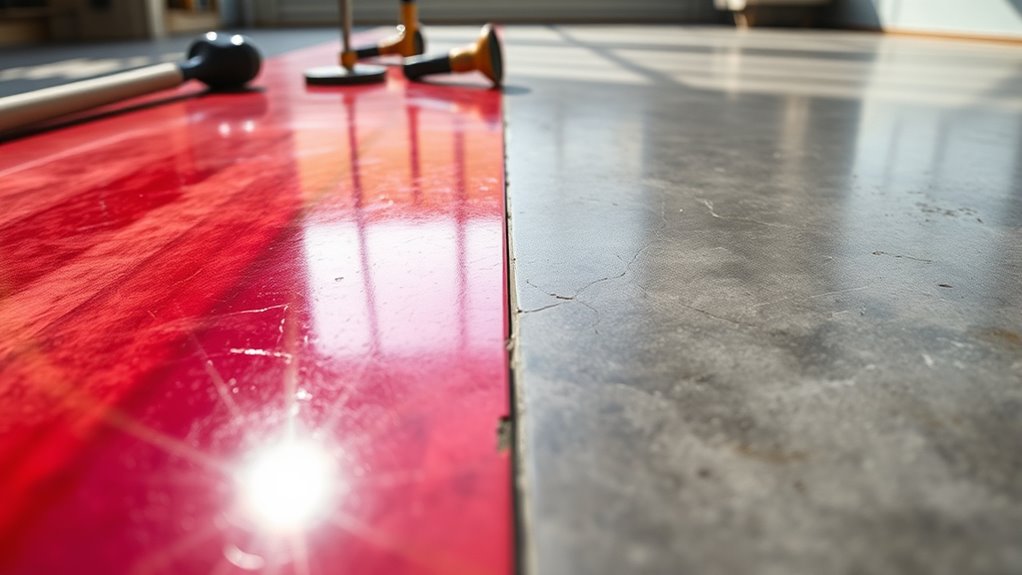
Although epoxy resin vloeren might seem straightforward, the type and quality of the resin you choose greatly influence both performance and cost. When evaluating resin types, you’ll encounter options like 100% solids epoxy, water-based, and solvent-based resins. Each varies in durability, curing time, and environmental impact. A quality comparison reveals that 100% solids epoxy offers superior strength and chemical resistance but at a higher price point. Water-based resins are more affordable and environmentally friendly but may compromise longevity. Solvent-based types sit between these extremes. Understanding these distinctions allows you to select a resin type that balances cost with desired floor performance. Prioritizing higher-quality resin types can reduce maintenance and replacement expenses, ultimately granting you the freedom to invest in flooring that meets both your budget and functional expectations.
Size and Condition of the Flooring Area
When calculating epoxy resin flooring costs, the size and condition of your flooring area play critical roles. Accurate flooring measurements are essential to estimate material quantities and labor time, directly impacting your budget. Larger areas naturally require more epoxy and extended application periods, increasing costs. Additionally, area accessibility affects installation efficiency; tight spaces or multiple levels can slow progress, raising labor expenses. The condition of your floor influences how smoothly the epoxy adheres, which can affect the amount of product needed for uniform coverage. While surface repairs are separate, the inherent state—such as unevenness or moisture levels—can dictate specialized techniques or materials, indirectly influencing cost. Understanding these factors lets you plan effectively, ensuring your flooring investment aligns with your freedom to choose quality and budget.
Preparation and Surface Repair Requirements
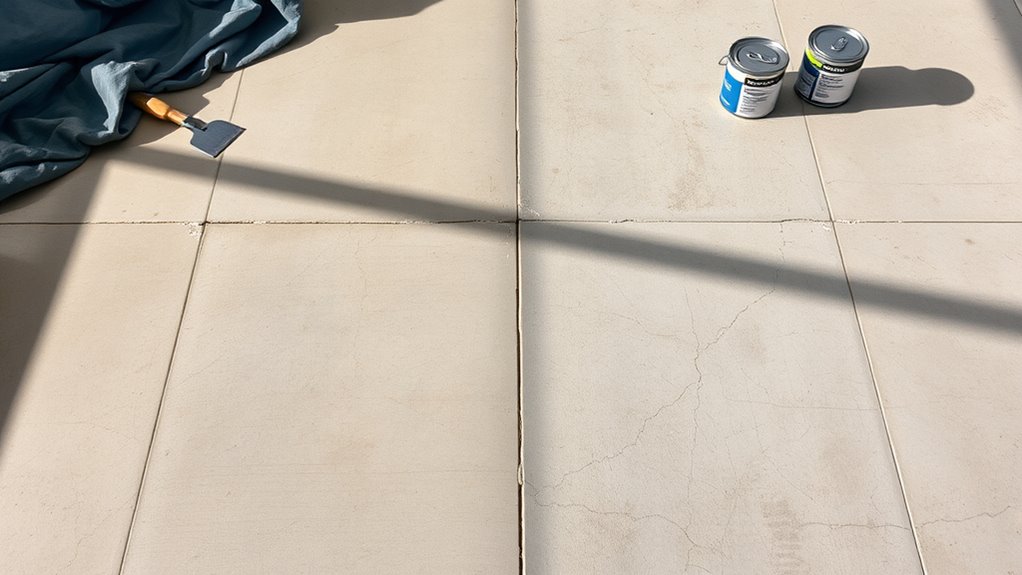
Since epoxy resin requires a clean, stable surface for best adhesion, thorough preparation and surface repair are essential steps that directly affect both performance and cost. You’ll need to start with a detailed substrate assessment to identify cracks, moisture issues, or contaminants that could compromise bonding. Surface cleaning is critical; any dust, oil, or residue must be meticulously removed, often requiring mechanical abrasion or chemical cleaning agents. Repairing surface imperfections, such as filling cracks or leveling uneven areas, guarantees a uniform substrate that supports the epoxy’s durability and aesthetic finish. Neglecting these preparatory tasks can lead to premature failure, increasing long-term expenses. By investing time and resources upfront in precise surface preparation, you gain freedom from costly repairs and enjoy a resilient, high-quality epoxy flooring installation.
Labor and Installation Complexity
Labor intensity and installation complexity play pivotal roles in determining epoxy resin flooring costs. When you consider labor rates, more intricate installation techniques require skilled professionals, which drives up expenses. The time required for precise application and curing also impacts overall labor costs. You must evaluate these facets to optimize your budget without compromising quality.
Labor intensity and installation complexity significantly influence epoxy resin flooring costs and overall project budgeting.
Key factors include:
- Surface geometry: Complex layouts increase labor time.
- Layering requirements: Multiple coats necessitate extended labor.
- Specialized techniques: Decorative or anti-slip finishes demand expert handling.
- Accessibility: Difficult-to-reach areas raise installation difficulty and labor rates.
Additional Features and Customization Options

Although epoxy resin flooring offers a solid base solution, incorporating additional features and customization options can greatly influence the overall cost. When you select from a broad spectrum of color options, you add complexity to the process, requiring precise pigment mixing and quality control to achieve consistent results. Moreover, opting for specialized surface textures—such as non-slip finishes or decorative patterns—demands advanced application techniques and often extends installation time. These customizations not only elevate aesthetics and functionality but also impact material usage and labor intensity. If you want a flooring solution that aligns with your specific style and performance needs, be prepared for these enhancements to increase your budget. Ultimately, balancing desired customization with cost considerations guarantees you maintain freedom in design without unintended financial surprises.

